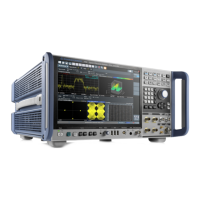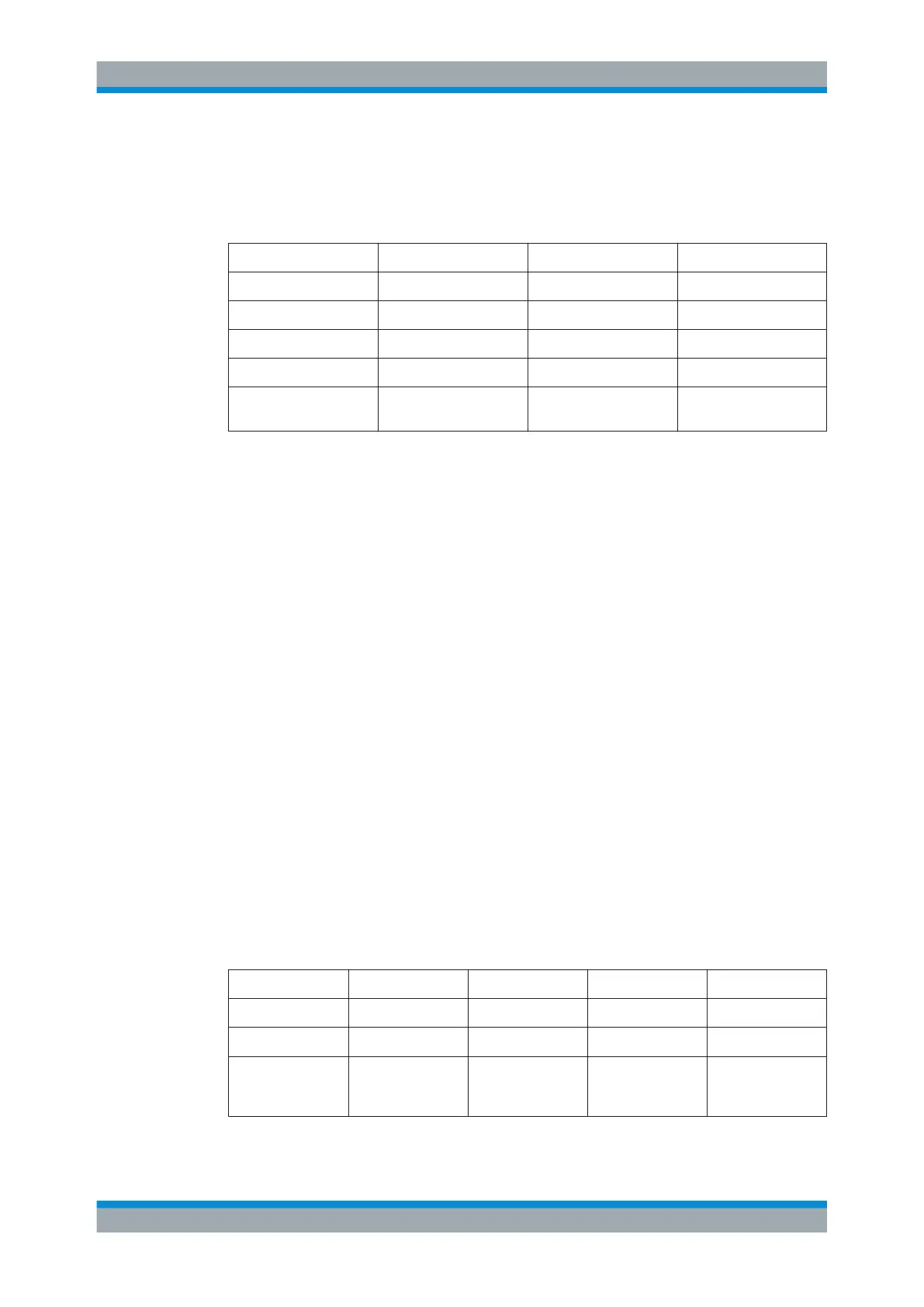Measurements and Results
R&S
®
FSW
336User Manual 1173.9411.02 ─ 43
The filter bandwidth and time parameters of the detector depend on the measured fre-
quency. The time lag of the simulated pointer instrument reflects the weighting factor of
the signal depending on its form, modulation, etc.
Table 7-17: Required parameters depending on frequency for CISPR quasipeak detector
Band A Band B Band C/D
Frequency range < 150 kHz 150 kHz to 30 MHz > 30 MHz
Resolution bandwidth 200 Hz 9 kHz 120 kHz
Charge time 45 ms 1 ms 1 ms
Discharge time 500 ms 160 ms 550 ms
Time lag of the simulated
pointer instrument
160 ms 160 ms 100 ms
Consider the following when defining the dwell time:
●
Unknown signals: select a dwell time of at least 1 second to ensure that pulses
down to a frequency of 5 Hz are weighted correctly
●
Known signals: shorter dwell time possible, as the signal level does not change
during the final measurement
When you change the frequency or the attenuation, the R&S FSW waits until the low-
pass filter has settled before starting the measurement.
CISPR Average detector (CISPR filter only)
The CISPR Average detector displays a weighted average signal level according to
CISPR 16-1-1.
The average value according to CISPR 16-1-1 is the maximum value detected while
calculating the linear average value during the specified dwell time.
The CISPR Average detector is only available for the CISPR filter.
The CISPR Average detector is applied to measure pulsed sinusoidal signals with a
low pulse frequency, for example. It is calibrated with the RMS value of an unmodula-
ted sinusoidal signal. The average value is determined by lowpass filters of the 2nd
order (simulating a mechanical pointer instrument).
The filter bandwidth and time lag of the detector depend on the measured frequency.
The time lag of the simulated pointer instrument reflects the weighting factor of the sig-
nal depending on its form, modulation, etc.
Table 7-18: Required parameters depending on frequency for CISPR Average detector
Band A Band B Band C/D Band E
Frequency range <150 kHz 150 kHz to 30 MHz 30 MHz to 1 GHz >1 GHz
IF bandwidth 200 Hz 9 kHz 120 kHz 1 MHz
Time lag of the
simulated pointer
instrument
160 ms 160 ms 100 ms 100 ms
Electromagnetic Interference (EMI) Measurement

